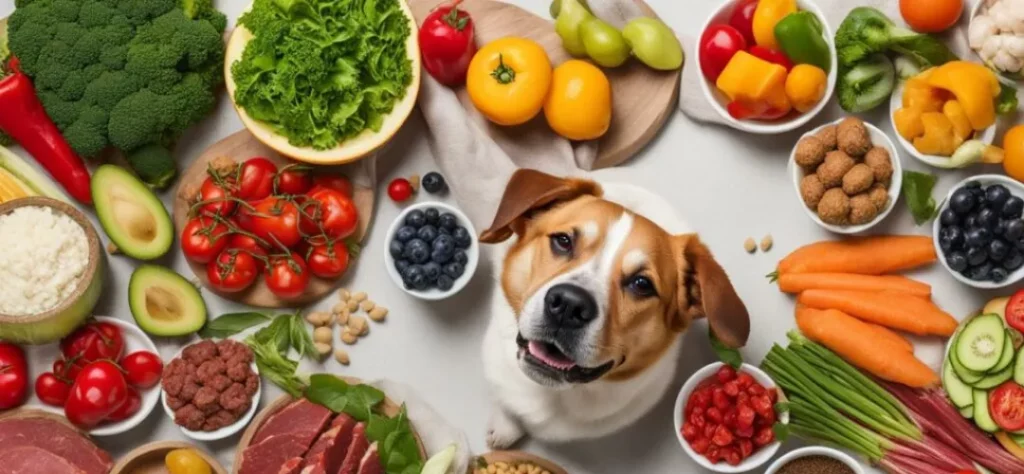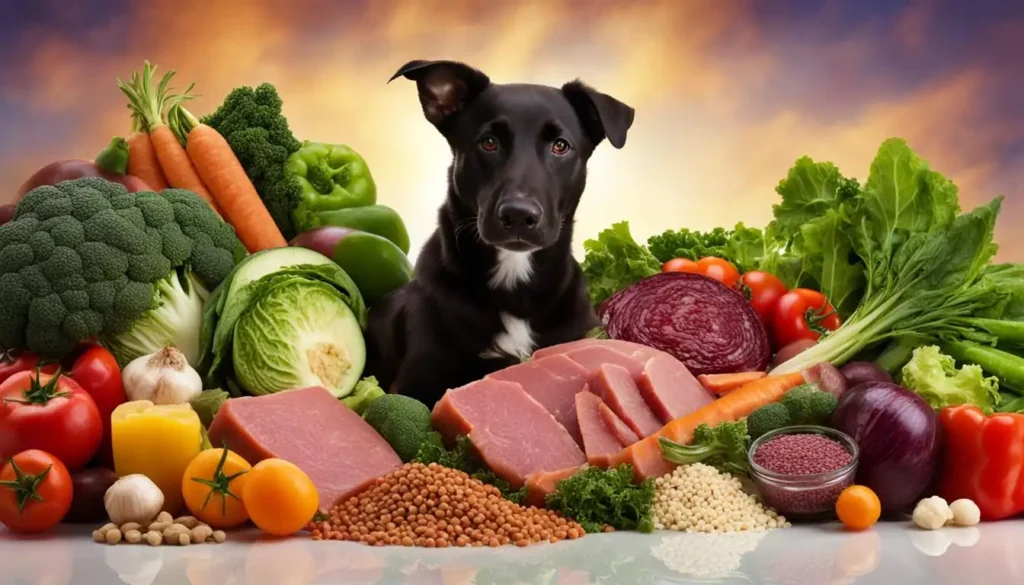Dogs don’t like to drink water and it’s always a problem for parents. Do you know what to do if your dog is a picky eater? Do you want to give your baby fresh food, but don’t know how to choose? If you have these problems, this article can help you solve them!
Fresh food for dogs has a lot of benefits for dogs, such as replenishing water, adjusting picky eaters, nutritional balance and other benefits, so a lot of parents will choose the dog fresh food meal packs for babies to eat.
So how to choose the right fresh food for dogs has always been a common problem for parents of furry children, the dog’s diet affects the baby’s health is very big, it may be that the poor palatability of the feed makes the dog picky about what to eat, resulting in nutritional imbalance affecting health, or it may also be a food allergy that causes the baby to feel uncomfortable and so on. Therefore, it is very important to find the most suitable food for your baby!
In this article, we will bring you to know the “3 Benefits of Fresh Food for Dogs”, “Fresh Food Ingredients for Dogs”, and “How to Distribute Fresh Food for Dogs”. We’ll show you the “3 Benefits of Dog Fresh Food”, “Dog Fresh Food Choices and Recommendations”, and “How to Divide Dog Fresh Food?
Whether you are a novice furry parent or a veteran pet owner, you can find practical advice in this article, so that you can better understand your dog’s taste preferences, adjust various dietary issues, and find out the most suitable food for your baby, so that your baby can have a balanced and healthy diet!
Now let’s unlock the secrets of dog food, so that fur kids can enjoy delicious and nutritious meals!
3 Benefits of Fresh Food for Dogs

Benefit #1: Helps keep your dog hydrated
One of the benefits of fresh food for dogs is that it helps to keep them hydrated, which is important for their overall health. Fresh food usually contains a higher percentage of water than dry or canned food, allowing your dog to get enough water while eating.
Proper water intake has an important effect on kidney function, digestive system and overall physiological balance. Adequate hydration promotes digestion and absorption of food, regulates constipation, and helps eliminate waste and toxins from the body.
In addition, for some dogs that do not like to drink water, the addition of fresh food with high water content can increase their intake of water and help to regulate dehydration. Especially in hot weather or when dogs are older, it is important to provide adequate water.
Therefore, choosing fresh food for dogs not only satisfies their taste buds, but also takes care of their overall health and ensures that they get enough water in every meal.
Benefit #2: Adjust dog’s partiality
Another benefit of fresh food for dogs is that it can help to regulate your dog’s eating habits. Compared to traditional dry food, fresh food is more appealing, more stimulating to the senses and has a stronger flavor, making it easier for picky eaters to accept.
Some dogs may exhibit obnoxious or picky eating behaviors due to discriminating tastes or nutritional imbalances. Fresh food for dogs provides more choices of ingredients, including a variety of fresh meat, vegetables and fruits, which can satisfy the needs of dogs for a variety of flavors.
In addition, the fresh food process retains more natural flavors of the ingredients, so that dogs can feel the real food aroma, which will stimulate their interest in eating. For dogs that are picky eaters, providing a wide variety of flavors helps to adjust their eating habits while ensuring that they receive balanced nutrition.
Overall, the variety of flavors available in dog treats can appeal to picky eaters and provide balanced nutrition that they can enjoy while maintaining a healthy body.
Benefit #3: Control over ingredients
Providing your dog with fresh food is a healthy option that allows you to have more control over what your dog is eating. Compared to commercial dog food, fresh food meals are more transparent in their preparation, allowing you to be more in control of every ingredient and ensuring that your dog is consuming high-quality, additive-free, natural ingredients.
By choosing fresh protein sources, healthy fruits and vegetables and nutrient-rich grains, parents can provide their dogs with a balanced diet that meets their specific physiological needs, is tailored to their health status, age and breed, and avoids potential allergy-inducing or discomfort-inducing ingredients.
In short, providing fresh food for dogs is not only a thoughtful gesture, but also gives parents more control over their dog’s diet, ensuring that their babies receive the highest quality, most secure nutrition.
Dog Fresh Food Ingredients and Recommendations
Avoiding Foods Your Dog Cannot Eat
Chocolate, coffee, tea, onions, scallions, garlic, macadamia beans, walnuts, grapes, avocados, raw meat, raw eggs, etc. are all foods your dog should avoid! Remember to be careful when preparing meals!

1. Coffee, tea, chocolate
Coffee, tea, chocolate contains methylxanthine and other alkaloids, these substances in the dog’s body metabolism is slower than that of humans, once accidentally eaten may lead to toxicity, manifested in persistent restlessness, extreme thirst, urinary incontinence, vomiting and diarrhea, high fever, rapid heartbeat and other dangerous conditions.
2. Hawaiian beans, walnuts
Excessive intake of macadamia beans and walnuts may cause poisoning in dogs, resulting in poor spirits, diarrhea and other symptoms, and may even experience convulsions, seizures and abnormal heartbeat. Other nuts are hard and can cause gastrointestinal discomfort, so avoid feeding them.
3. Grapes, avocados
Grapes may cause acute kidney failure or even fatal; avocado has high fat content, which may cause obesity in less active dogs.
4. Raw Meat and Eggs
Raw meat and eggs contain a lot of bacteria and microorganisms such as Salmonella and Staphylococcus aureus. These bacteria and toxins can cause vomiting or gastrointestinal discomfort. To ensure the health of your fur child, it is recommended to avoid feeding raw food.
5 Essential Nutritional Ingredients to Share

Dog Food Recommendation 1: Meat
It is recommended to combine two different kinds of meat in one meal, such as pig with fish, chicken with beef, or categorize according to the fat content, alternating between low-fat meat, medium-fat meat, and high-fat meat, which will help the dog take in a balanced amount of nutrients in various aspects.
Dog Food Recommendation 2: Roots, grains and legumes
When combining grains and rhizomes, special attention should be paid to the amount of fiber, too much or too little may cause discomfort to the dog. Cereals and beans can be mixed to achieve the effect of protein complement each other and improve the absorption rate of protein.
Dog Food Recommendation 3: Fruits and Vegetables
The dietary fiber in fruits and vegetables helps maintain intestinal health and plays an important role in dog food. Special attention should be paid to the fact that fruits are high in sugar, therefore, it is recommended that vegetables should be the main ingredient and fruits should be the supplementary ingredient in the distribution of servings.
Dog Fresh Food Recommendation 4: Offal
Offal food is rich in minerals and vitamins, such as liver, sinew, cartilage, pig heart, tripe, etc., are suitable for adding fresh food ingredients, can add multiple nutrition for dogs.
Fresh Dog Food Recommendation 5: Fats and Oils
Fats and oils are important nutrients for dogs, so a balanced intake of fats and oils from different sources is crucial. Animal fats and oils such as chicken, pig, lamb, cow, salmon and deep-sea fish oils, and vegetable fats and oils such as olive oil and sunflower oil. These fats and oils contain a variety of essential fatty acids, which are beneficial to your dog’s health.
What is the proportion of fresh food for dogs?

1 Day Calorie Requirement for Dogs
When preparing your dog’s fresh food, you need to know your dog’s daily calorie requirement, so that you can calculate the proper amount of fresh food according to his calorie requirement, and then make the final allocation of ingredients. Now, let’s start from the algorithm of the daily calorie requirement of your dog and proceed to the detailed step-by-step guide!
Before calculating your dog’s daily calorie requirement, we first need to calculate your dog’s RER (Resting Energy Requirement), which is calculated by multiplying “70 times the 0.75th power of body weight”.
Using this formula, we can get the baseline energy requirement and then adjust the coefficients according to your dog’s physiological conditions (e.g. age, pregnancy, activity level, etc.) to calculate your dog’s overall daily energy requirement.
Below is a comparison table of the coefficients used for different physiological conditions:
| Dog’s physical condition | coefficient |
| newborn puppies | 3 |
| 1 year old and above | 1.8 |
| More than 6 weeks pregnant | 2 |
| High physical activity | 2~5 |
| Lack of exercise in old age | 1.5 |
For example, a 2 year old dog weighing 6 kg with normal activity level:
The RER is 70 x 0.75th power of 6 = 268 kcal/day, and the coefficient of physical condition is 1.8, so the daily calorie requirement for a dog is 268 x 1.8 = 482.4 kcal.
Dog Food Portion
After knowing your dog’s daily calorie requirement, divide your dog’s daily calorie requirement by the coefficient of body size to find out your dog’s daily fresh food weight.
Below are the coefficients for your dog’s size:
| dog size | coefficient |
| Small dogs (1-10 kg) | 1.4 |
| Medium dogs (10-20 kg) | 1.5 |
| Large dogs (over 20 kg) | 1.6 |
Let’s take a 2 year old dog weighing 6 kg with a daily calorie requirement of 482.4 kcal and a size factor of 1.4 as an example:
The weight of fresh food required is 482 / 1.4 = 344.6g.
Let your baby eat the best nutrition and deliciousness!
In this article, we introduce you to “3 Benefits of Fresh Food for Dogs”, “Fresh Food Ingredients for Dogs”, and “How to Distribute Fresh Food for Dogs”. We hope that you will find the most suitable food for your dog!
We hope you can find the most suitable ratio for your baby!
